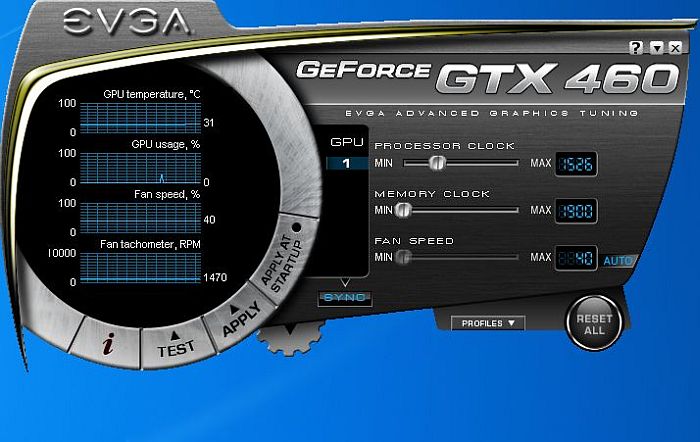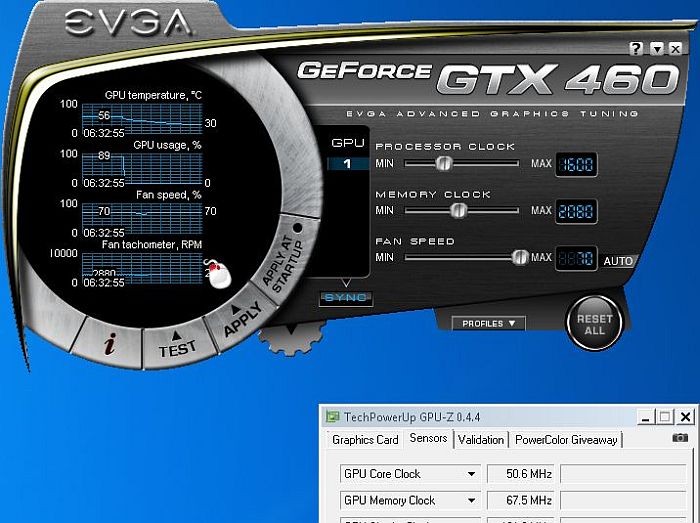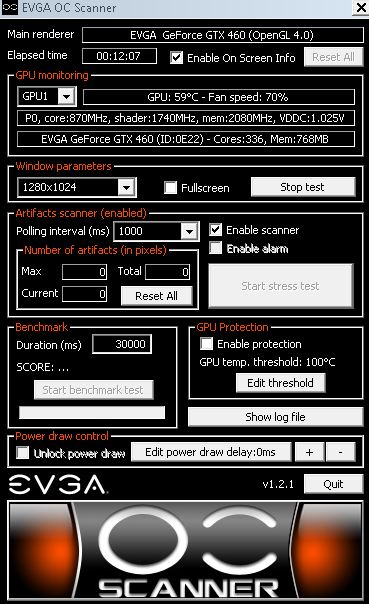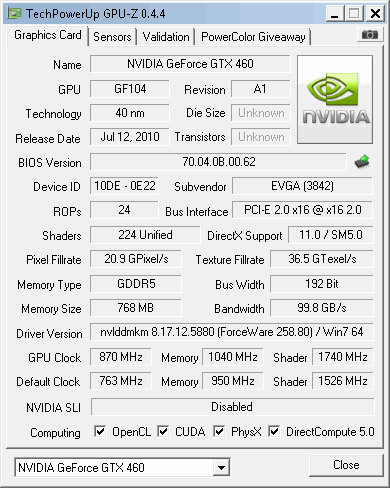Index
Geforce GTX 460 will surely be a hit with overclockers. So far, Fermi cards haven’t quite excelled in overclocking and it seems that the slower the card – the better it overclocks. Up ‘till now, the GTX 465 (GF100) was the only model which managed to hit 800MHz with air cooling. GF104 based cards, on the other hand, show some serious promise and the fact that many partners had overclocked cards on day one speaks for itself. In fact, some of the aforementioned cards run at 800MHz, which is 150MHz higher than reference.
Geforce GTX 460 je nova hit kartica za poklonike overclockinga. FERMI kartice ina?e nisu prijateljski nastojene overclockingu, a izgleda da što je slabija kartica to se bolje overclocka. Do sada je GTX 465 (GF100) bio jedini model na kojem smo sa zra?nim hladnjakom postigli 800MHz za GPU. Da je GF104 stabilniji i OC prijateljski govori ?injenica da su se mnogi partneri ve? na dan predstavljanja kartice odlu?ili da izbace na tržište tvorni?ki overclockane modele, od kojih pojedini rade na ?ak 800MHz, što je 150MHz više u pore?enju sa referetnom brzinom od 650MHz.
EVGA GTX 460 Superclocked – overclocking with the help of Precision utility
EVGA GTX 460 Superclocked’s reference clocks are 763MHz for the GPU (shaders run at twice the speed) and the memory at 3800MHz (effectively). GTX 460 Superclocked is already available on the market and comes clocked 88MHz higher than on the reference GTX 460, which is a respectable factory overclock.
We had help from EVGA’s Precision v1.9.5 in our overclocking, and this latest version of the utility supports GTX 460. Using this small and simple utility makes monitoring and setting fan speed a breeze.
The latest, v1.9.5 utility also displays fan tachometer, where we find that minimum RPM is 1500 RPM or 40% RPM, whereas the maximum RPM is at 2900 RPM or 70% RPM. EVGA Precision no longer uses static slider limits calibration and adjusts the limits dynamically when some external factors affect it (e.g. when minimum fan speed is limited by NVIDIA driver), which is the reason why we couldn’t push the fan above 70% RPM.
Minimum temperature on the GTX 460 Superclocked was 30°C and maximum temperature hit 66°C with AUTO fan regulation. These are excellent results, and are even more impressive considering that the cooler is almost inaudible in 3D.
We had to increase fan RPM for our overclocking so we set it to 70% RPM, where temperatures hit about 59°C. This proves that the GTX 460’s cooling packs enough potential to cool the card in pretty much any scenario.
870MHz for the GPU and 4160MHz (effectively) are excellent results, and Nvidia finally has an affordable card that has serious overclocking potential.
Our test rig equipped with the GTX 460 768MB consumed about 139W, whereas the same setup with an HD 5830 drew 146W. During FurMark testing, our system drew 299W and 314W, respectively. After we overclocked EVGA’s GTX 460 768MB to 870MHz, entire rig consumption increased to 324W.



